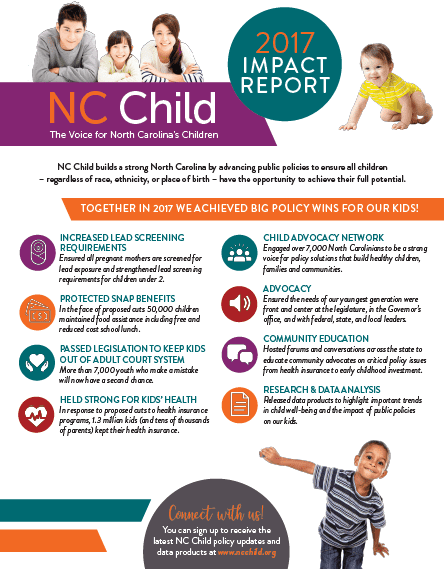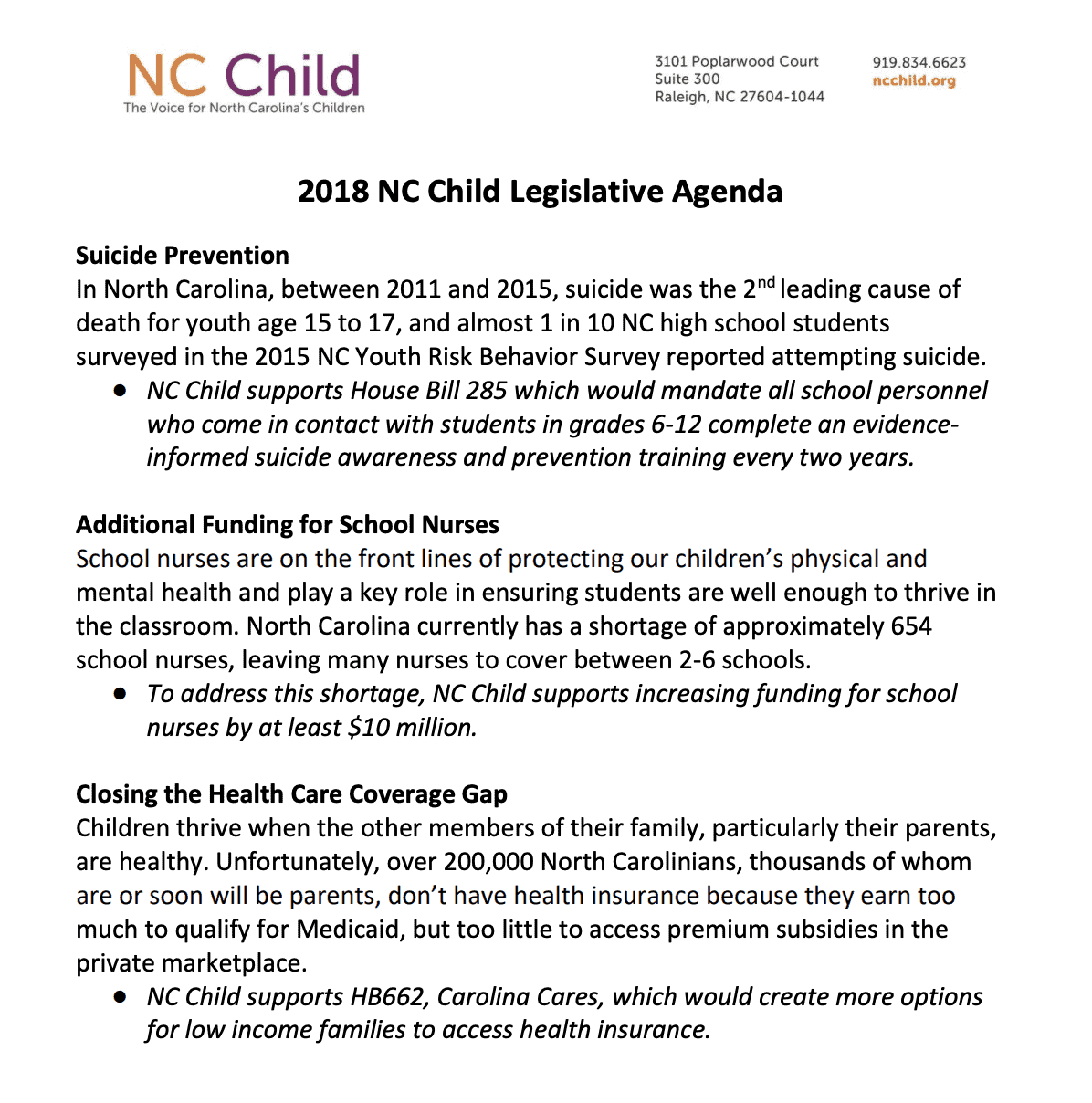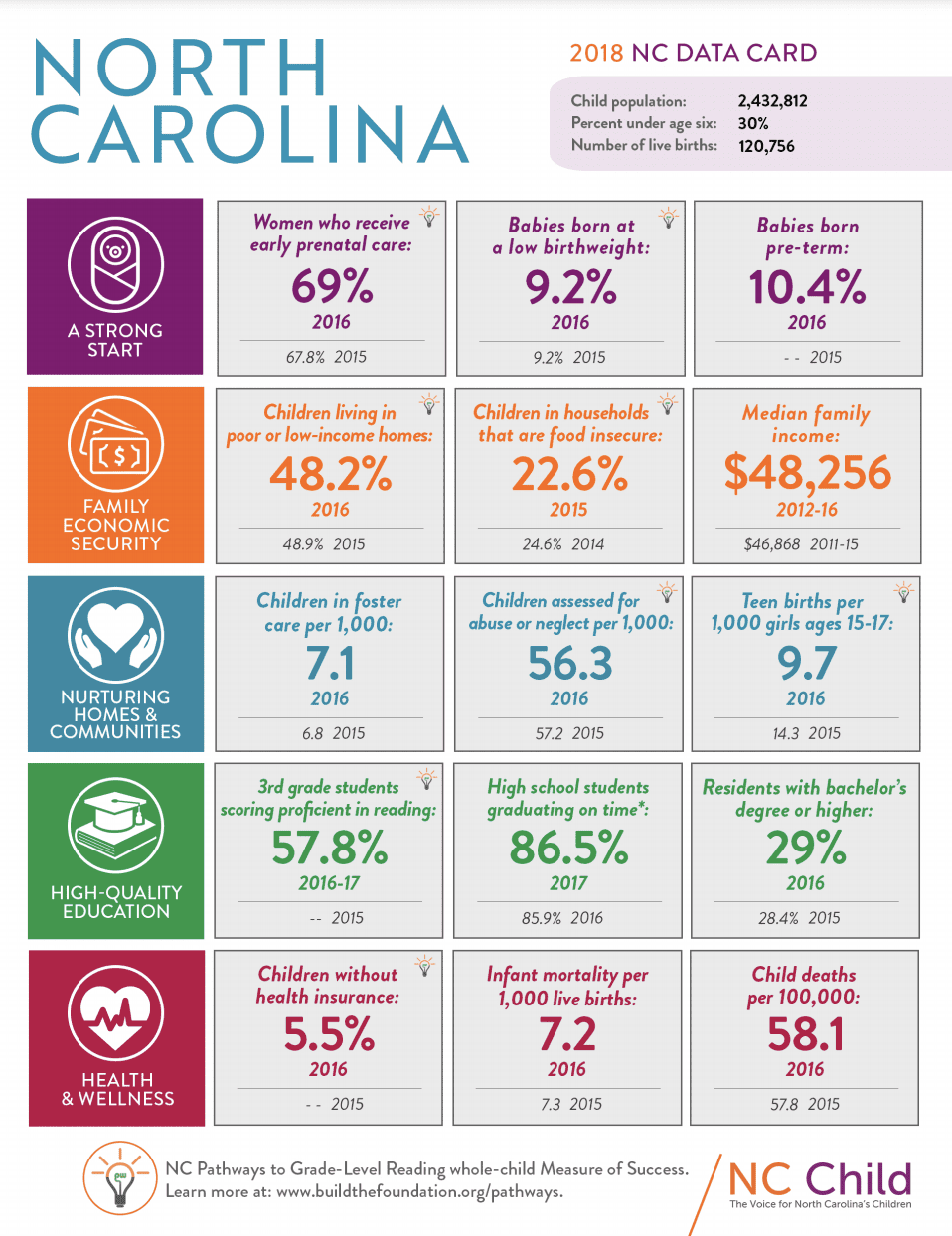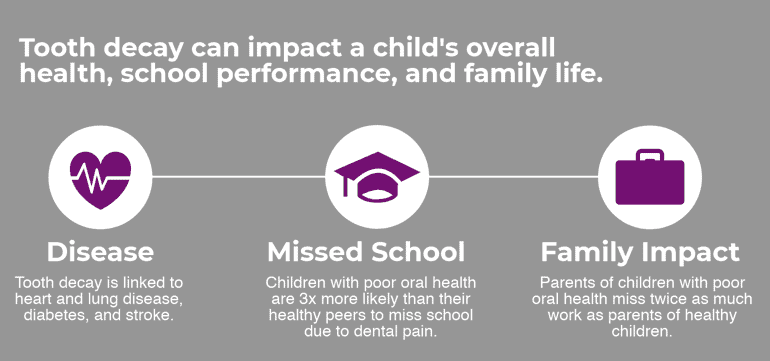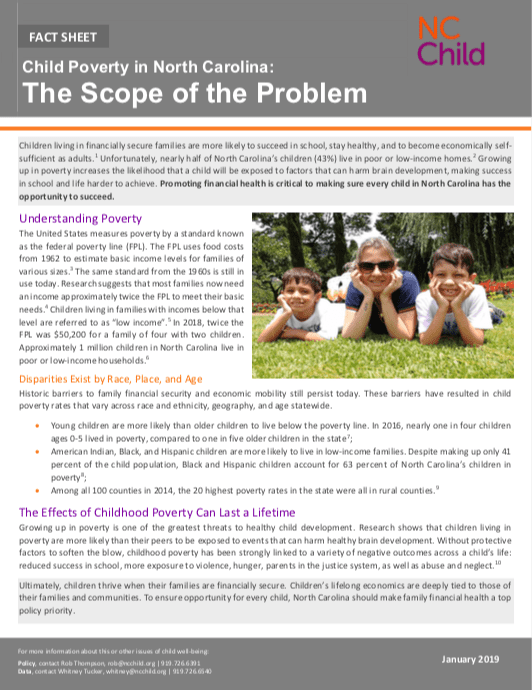
Child Poverty in North Carolina: The Scope of the Problem
January 2019
Children living in financially secure families are more likely to succeed in school, stay healthy, and to become economically self- sufficient as adults. Unfortunately, nearly half of North Carolina’s children (43%) live in poor or low-income homes. Growing up in poverty increases the likelihood that a child will be exposed to factors that can harm brain development, making success in school and life harder to achieve. Promoting financial health is critical to making sure every child in North Carolina has the opportunity to succeed.

